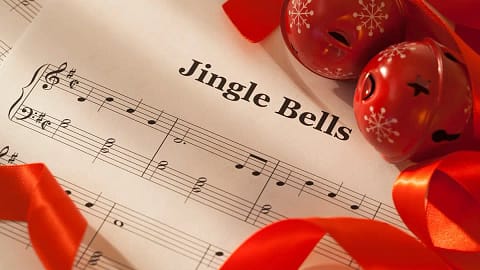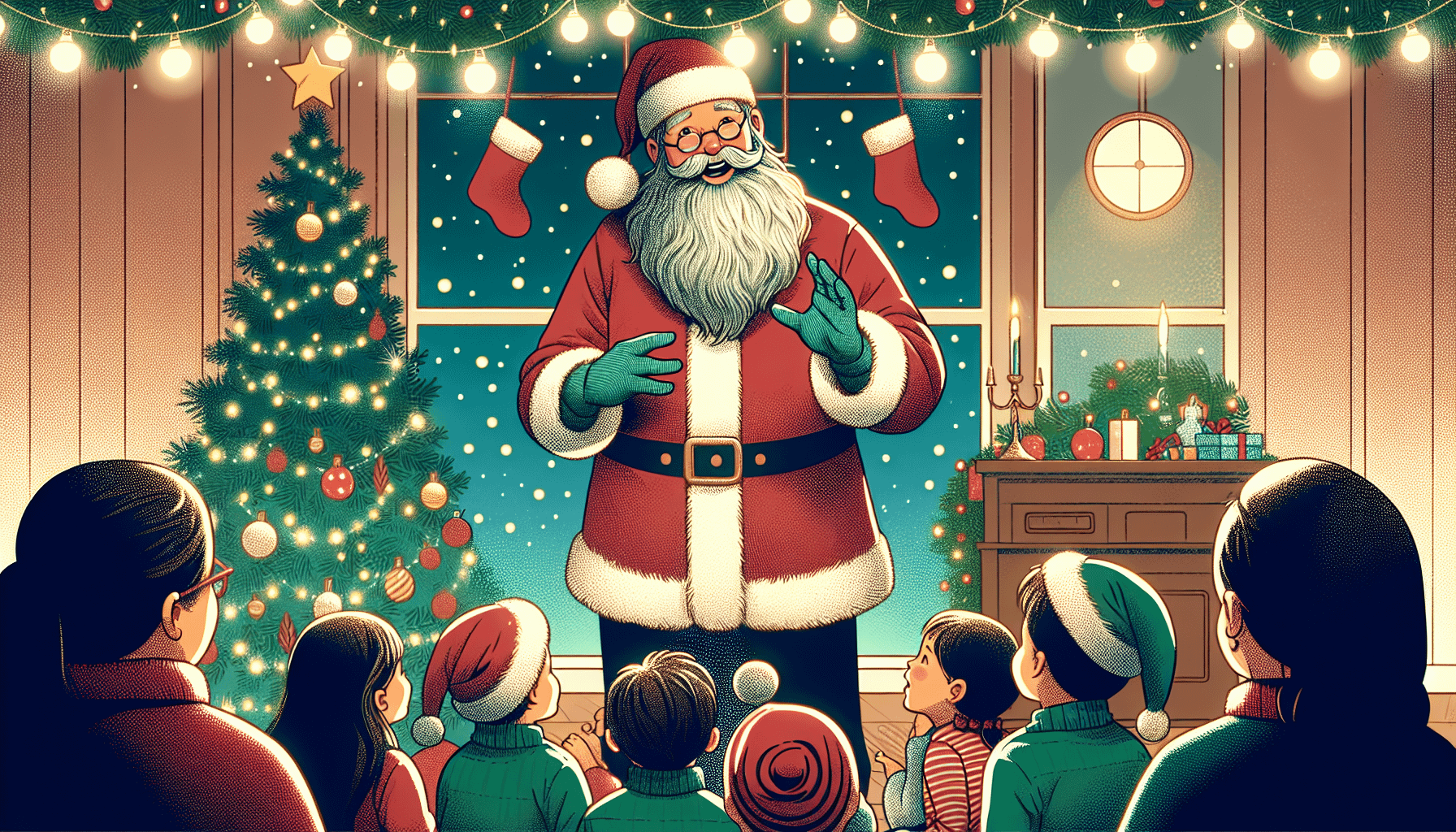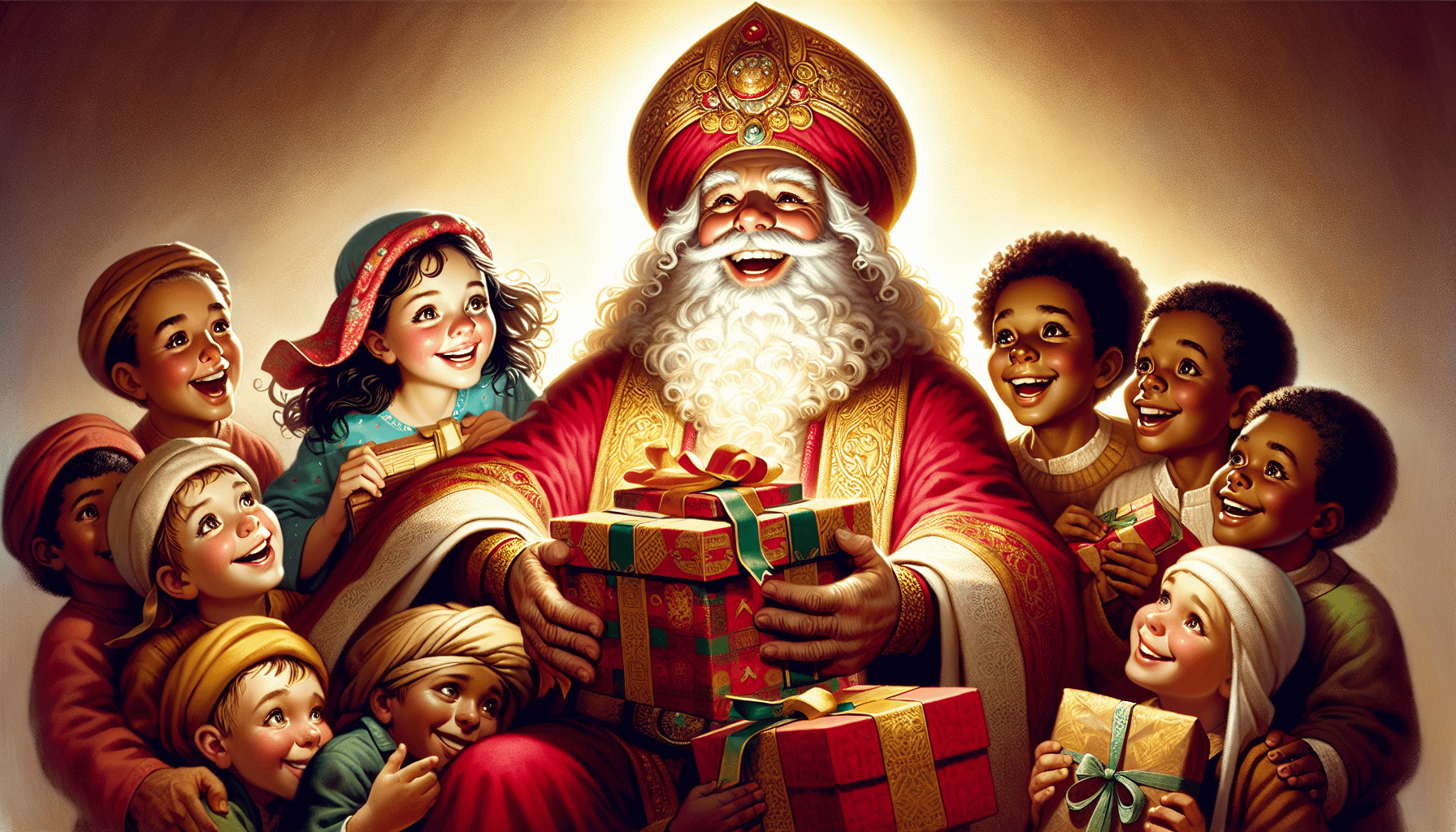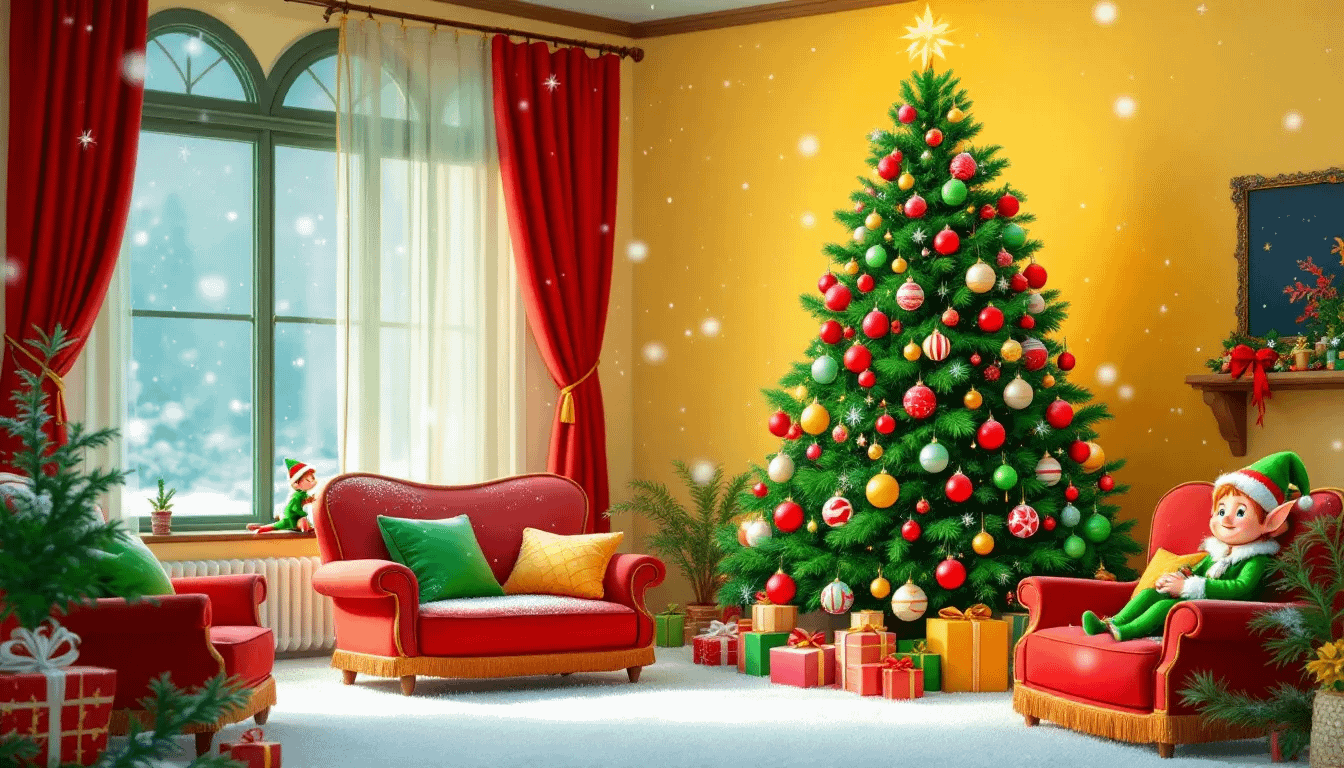“Jingle Bells,” a song that needs no introduction, has become an integral part of holiday celebrations worldwide. But have you ever wondered about the jingle bells history and origins of this iconic tune? From its creation in the 1850s to its controversial past and its journey to space, the story of “Jingle Bells” is as fascinating as the melody itself. So sit back, grab a cup of hot cocoa, and let’s delve into the captivating tale of this beloved Christmas classic.
Key Takeaways
Composed in the 1850s, “Jingle Bells” has become a beloved Christmas staple due to its catchy melody and festive lyrics.
Famous artists such as Bing Crosby, The Andrews Sisters, Frank Sinatra and The Beatles have all recorded their versions of the song.
Its cultural impact is undeniable. Debates surrounding its implications notwithstanding, it remains an integral part of holiday celebrations worldwide.
Jingle Bells History: The Origins

James Lord Pierpoint, Jingle Bells composer, wrote the song in the 1850s under the orignal title “The One Horse Open Sleigh.” Surprisingly, this classic Christmas song was not conceived as a holiday tune. Pierpont found his muse in the lively sleigh races near Simpson Tavern in Medford, Massachusetts, envisioning the song as a tribute to sleighing. The catchy melody and familiar lyrics, “Dashing through the snow, in a one-horse open sleigh,” captured the exhilarating spirit of sleigh rides during the holiday season.
Even though “Jingle Bells” was not the pioneer Christmas song, it swiftly secured its place as a Christmas staple. The song gained popularity and was republished under its current title in 1859, with the cover of the sheet music featuring a drawing of sleigh bells. Over the years, “Jingle Bells” has become one of the most beloved Christmas songs, played and sung by people of all ages worldwide during the festive season.
Who was James Lord Pierpont?
James Lord Pierpont, born in 1822, embarked on a life teeming with adventure and intrigue. James Pierpont came from a well-connected family, with his older sister Juliet married to millionaire Junius Spencer Morgan, whose eldest son, John Pierpont Morgan, followed in his father’s footsteps as a successful banker. James Pierpont’s first song for Ordway’s performers was about a man who had been unsuccessful in his search for fortune on the West Coast and had subsequently returned home.
Pierpont’s life took a controversial turn during the Civil War when he became an ardent advocate for the Confederacy. He composed anthems associated with the Confederate cause, such as “Strike for the South,” “We Conquer, or Die!” and “Our Battle Flag!”. Despite his support for the Confederacy, Pierpont’s lasting legacy remains the creation of “Jingle Bells,” a song that continues to bring joy and merriment to people around the world.
The Evolution of “Jingle Bells”
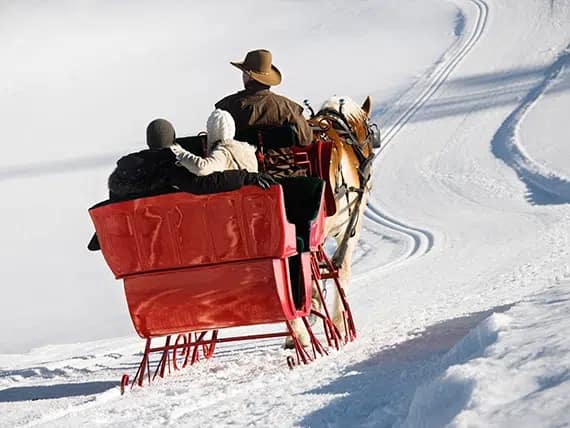
As the popularity of “Jingle Bells” soared, its ties with Christmas became more profound. In the early 20th century, the song cemented its status as a Christmas favorite, with its cheerful melody and lyrics evoking the festive season. Although not the first Christmas song, “Jingle Bells” has certainly become an iconic tune for the holidays.
With time, the chorus of “Jingle Bells” shed its initial resemblance to Canon in D by the 17th-century German composer Johann Pachelbel, shaping the universally known melody we recognize today.
Early Performances and Recordings
The first recorded performance of “Jingle Bells” took place on September 15, 1857, by minstrel performer Johnny Pell at Ordway Hall in Boston. This performance marked the beginning of the song’s journey into the hearts of millions.
The Edison Male Quartette recorded a Christmas medley titled “Sleigh Ride Party” in 1898, which featured a merry sleigh ride experience through its tunes. This medley includes the earliest surviving recording of “Jingle Bells”. This recording is thought to be the inaugural Christmas record, further solidifying the song’s association with the holiday season.
Famous Covers and Artists
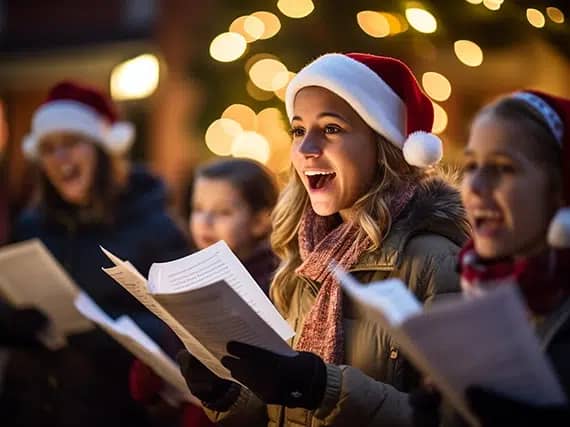
Many artists have lent their voices to “Jingle Bells,” providing unique renditions that have contributed to the song’s enduring popularity. Notable musicians such as:
Bing Crosby
The Andrews Sisters
Frank Sinatra
The Beatles
have all recorded their versions of this beloved Christmas song. These diverse interpretations range from jazz to pop, showcasing the versatility and timeless appeal of “Jingle Bells.”
From its humble beginnings as a sleighing song, “Jingle Bells” has transcended its original purpose to become a Christmas classic. Its infectious melody and festive lyrics continue to resonate with audiences worldwide, making it an indispensable part of holiday celebrations.
Dueling Birthplaces: Boston vs. Savannah
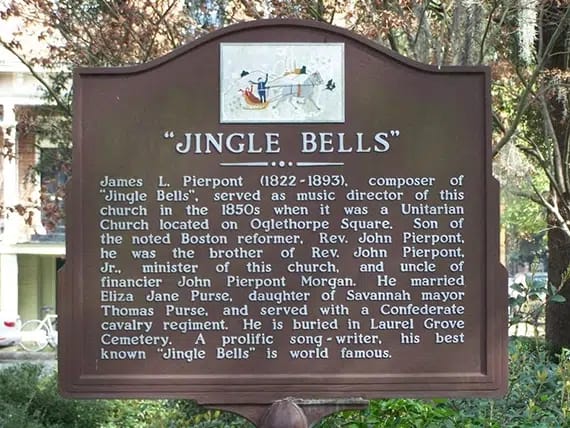
The origins of “Jingle Bells” have stirred prolonged debate, as both Medford, Massachusetts, and Savannah, Georgia, stake their claim as the song’s true birthplace. Medford asserts that Pierpont was inspired by the sleigh races on Salem Street, leading him to compose the song. A plaque in Medford even commemorates the town as the birthplace of “Jingle Bells”.
On the other hand, Savannah contends that the song was performed in their city in 1857, predating the earliest known performance in Boston. Despite the ongoing debate, there is no clear resolution, and the true origin of “Jingle Bells” remains a mystery.
Regardless of its disputed birthplace, the song’s widespread popularity and cultural impact are undeniable.

Controversial History: Minstrel Shows and Blackface
The history of “Jingle Bells” is fraught with controversies tied to minstrel shows and blackface. The song was initially performed in a blackface minstrel hall in Boston in September 1857, a prevalent form of entertainment at the time where white actors performed in blackface and mocked black people. This connection to minstrelsy has provoked discussions regarding the cultural implications of “Jingle Bells” and its potentially problematic origins.
While some argue that the song perpetuates unfavorable stereotypes of African Americans and should be excluded from holiday music playlists, others maintain that “Jingle Bells” has transcended its controversial past and is now a cherished part of holiday celebrations worldwide. The debate surrounding the song’s origins serves as a reminder to acknowledge the history and context of the music we enjoy and celebrate.
“Jingle Bells” in Space
On December 16, 1965, “Jingle Bells” etched its place in history as the inaugural song broadcast from space. During the Gemini 6 mission, astronauts Thomas Stafford and Wally Schirra played a humorous prank on mission control by reporting a satellite going from north to south in polar orbit. They then played the melody of “Jingle Bells” on a tiny harmonica, bringing some festive cheer to the mission.
This lighthearted moment has become an iconic part of space history, showcasing the enduring appeal of “Jingle Bells” and its ability to bring joy and merriment even in the most extraordinary circumstances.
Parodies and Adaptations
The wide-reaching popularity and cultural imprint of “Jingle Bells” have spurred a myriad of parodies and adaptations, some even featuring a bob tail ring. Some examples include:
“Jungle Bells” with coconut shells and sticker burrs
“Batman Smells” a popular recess parody for school age children
Magic School Bus version which focuses on recycling
These humorous and alternative renditions offer a more subversive take on the classic song.
The song has also inspired homages, such as “Jingle Bell Rock,” which employs the lyrics of “Jingle Bells” with a distinct melody. “Aussie Jingle Bells” celebrates Christmas in the summertime of the Southern hemisphere, offering a culturally specific take on the classic.
These parodies and adaptations showcase the versatility and adaptability of “Jingle Bells,” as it continues to inspire new generations of musicians and listeners, ensuring its place in popular culture for years to come.
Cultural Impact and Legacy
“Jingle Bells” has forged a substantial cultural mark, evolving into one of the most identifiable and oft-performed Christmas songs globally. Its widespread popularity has led to numerous recorded jingle bells by a variety of artists, solidifying its place in holiday music playlists.
However, the song’s connection to minstrelsy and blackface has also sparked conversations about its cultural implications and potential perpetuation of unfavorable stereotypes.
Despite these debates, “Jingle Bells” continues to be a cherished part of popular culture and is highly esteemed by many. Its catchy melody and festive lyrics make it a fundamental component of holiday celebrations around the globe, transcending its origins and controversies to become a timeless classic.
Summary
From its creation in the 1850s to its journey into space, the story of “Jingle Bells” is as fascinating as the melody itself. As we continue to celebrate the holiday season with this beloved song, let us remember its storied past, appreciate its cultural impact, and cherish the joy it brings to our hearts and homes year after year.
Frequently Asked Questions
Who wrote the song Jingle Bells?
What were jingle bells originally used for?
Jingle Bells were originally used as a festive bell for horse-drawn carriages and sleighs to make a jingly sound while in motion.
When did Jingle Bells Come Out?
James Lord Pierpont wrote and composed “Jingle Bells” in 1857, originally titled “The One Horse Open Sleigh”. It was published under the title “The One Horse Open Sleigh” in September 1857 and its debut was said to be in 1850 in Medford, Massachusetts.
Was “Jingle Bells” originally a Christmas song?
No, “Jingle Bells” was not originally composed as a Christmas song; it was initially intended to be a song about sleighing. Contrary to popular belief, it was first performed at a Thanksgiving church service with no mention of Christmas.
Where was “Jingle Bells” first performed?
“Jingle Bells” was first performed in a blackface minstrel hall in Boston in September 1857, providing an enduring holiday classic for generations to come.
What is the debate between Boston and Savannah about the birthplace of “Jingle Bells”?
The debate between Boston and Savannah about the birthplace of “Jingle Bells” remains unresolved, with both cities making credible claims.
What is a one horse open sleigh?
In the era when “Jingle Bells” was penned, sleighs pulled by a single horse were a common mode of transportation during winter. These sleighs were open-topped, unlike carriages that had a covered top.
